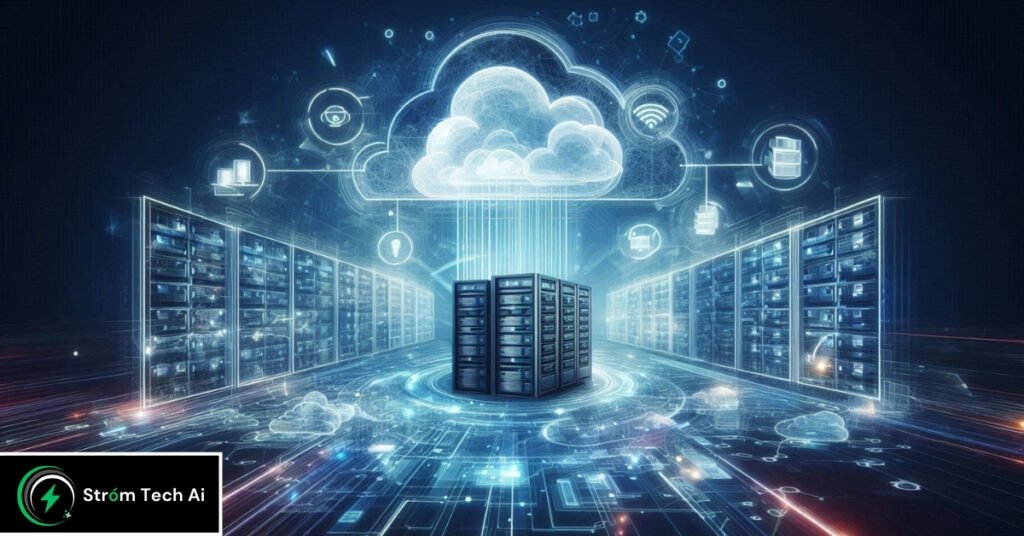What Role Does Cloud Computing Have With Edge AI?

The combination of artificial intelligence (AI) and cloud computing are two of the latest and greatest technological developments as organizations and sectors around the world adjust to these changes. The result reduces latency, creates new opportunities for real-time applications, and makes it possible for platforms to deal with massive volumes of data effectively. However, in what precise way do edge AI and cloud computing interact?
Let’s examine what role does cloud computing have with edge AI mutual benefits and tremendous upside in more detail.
Table of Contents
Understanding Cloud Computing
Cloud computing is an emerging technology that provides, upon request access to pooled computer power via the Internet. By eliminating the need for pricey facilities, it has enabled businesses of all sizes to grow and streamline processes in a flexible, economical, and successful way.

Fundamentals of Cloud Computing
The concepts of virtualization, automation, and remote access underpin cloud computing. In a general sense, cloud-based contributions can be classified among three fundamental models:
- Infrastructure as a Service (IaaS): involves virtualized figuring assets that are made accessible over the Internet, including computational power, computers, and networks.
- Platform as a Service (PaaS): Offering a system liberated from stresses in regards to the hidden advancements with the goal that engineers can create, test, and run applications.
- Software as a Service (SaaS): This takes out the requirement for equipment-based downloads by conveying programming and different merchandise over the organization.
The Evolution of Cloud Technology
Since its conception, cloud computing has developed quickly, going from simple archived information solutions to becoming the foundation of massive amounts of data, AI, and the Worldwide Web of Things (IoT). It has grown to include multi-cloud and hybrid solutions, which let businesses optimize operations and increase mobility by fusing on-premise data with the cloud. This advancement has paved the way for the creation of edge AI.
The Emergence of Edge AI
The need for quicker execution times and instantaneous making choices has led to the emergence of edge AI as a noteworthy advancement in artificial intelligence ( AI ). Instead of depending exclusively on cloud-based infrastructure, edge AI processes AI algorithms directly on edge devices like mobile phones, sensors for the Internet of Things, and robots.
Defining Edge AI
The use of AI models and processing capacity at the “edge” of the network, or nearer to the point of data generation, is referred to as edge AI. As a result, there is less need for the cloud to handle processing activities, which guarantees quicker reaction times and uses a smaller bandwidth when sending large amounts of data.
The Significance of AI at the Edge
When ticks matter, edge AI’s primary benefit is its capacity to deliver immediate data and judgments. In sectors like medical treatment, intelligent production, and self-driving vehicles, edge computation is essential for safety, effectiveness, and creativity.
Comparing Edge AI and Cloud AI
While edge and cloud AI are important technological advances, their functions are distinct. Whereas edge AI places more emphasis on performance and locality and handles activities where decisions are made in real-time, cloud AI concentrates on using massive processing resources to run complicated artificial intelligence (AI) models.
Key Differences
- Latencies: Cloud AI may cause difficulties because of the time needed to transfer data to centralized cloud servers; in contrast, edge AI minimizes latency by going through information remotely.
- Bandwidth: Unlike cloud AI, which often requires transferring large amounts of information to the cloud, edge AI lowers the requirement for continuous data exchange, hence lowering the use of bandwidth.
- Data Security: Edge AI improves privacy by processing data locally, which is particularly helpful for sensitive applications like healthcare. On the other hand, in the same direction, robust security is necessary for encrypted information transfers in cloud AI.
Performance and Efficiency
When low-latency responses are needed, Edge AI performs better. For example, transmission issues can cause hazardous delays for a vehicle with autonomy that relies on cloud AI, while edge AI can make snap choices based straight on the hardware of the car. But when it comes to jobs like training intricate neural networks, which demand massive computing data storage and preparation, cloud AI shines.
Enabling Technologies
Several technologies enable the integration of edge AI, including:
- 5G connections: The ability of 5G to transmit data quickly between edge devices and cloud resources is largely dependent on its fast rate and low delay characteristics.
- AI Accelerators: Edge-specific CPUs, and graphics processing units (G and TPUs are examples of hardware that optimizes tasks involving AI.
- IoT Sensors: These gadgets gather data from the surroundings within, necessitating swift analysis and making decisions at the edge.
Advanced Networking
By automatically distributing services where they have the greatest need, modern networking techniques like software-defined networking (SDN) and network segmentation further improve the effective use of edge AI. This guarantees the seamless integration of the internet and edge technologies.
Real-World Applications of Edge AI
Edge AI has already changed key industries:
- Healthcare: Wearables equipped with edge artificial intelligence (AI) features can monitor patients in real-time and immediately notify medical professionals of any abnormalities found.
- Automated Automobiles: With Edge AI, automobiles can immediately evaluate information from sensors to ensure real-time recognition of obstacles and routing.
- Smart Cities: By optimizing power consumption, controlling roadways, and keeping an eye on contaminants, Edge AI helps cities become more comfortable and functional.
Tools and Platforms for Edge AI
To make edge artificial intelligence (AI) creation easier, several technology platforms have been developed:
- Prominent edge AI technology NVIDIA Jetson provides computational power for applications that utilize AI.
- A specially designed processor for executing AI models on edge devices is the Google Edge TPU.
- Azure IoT Edge: an application that enables the deployment of cloud applications on Internet of Things (IoT) equipment, including artificial intelligence models.
What Role Does Cloud Computing Have With Edge AI
Cloud computing enhances the capabilities of edge AI by acting as a central hub for complex computations, model training, and large-scale data storage. The cloud supports edge AI by offloading non-urgent tasks like analytics, while also offering scalability and global reach. Together, they provide a hybrid architecture in which large-scale tasks are managed by the cloud and real-time data is handled by the edge.
Industry Leaders in Edge AI
Key players in the edge AI space include:
- NVIDIA: Leading the charge with their edge AI solutions, especially in the fields of robotics and autonomous vehicles.
- Intel: Pushing innovation with AI chipsets that power edge devices.
- Microsoft Azure and AWS: Both offer cloud services that integrate seamlessly with edge AI platforms, helping businesses deploy intelligent edge solutions.
Exploring Edge AI Case Studies

- Tesla’s Automated Driving: Cloud AI is used for data analysis and model updates, while innovative artificial intelligence is used in the cars to handle data from cameras and sensor arrays, allowing for instantaneous choices.
- GE’s Smart Manufacturing: The corporation employs edge AI to monitor and control its manufacturing operations to ensure quality and reduce disruptions. It can detect errors instantly.
Associations could accomplish already unreachable degrees of adaptability, adequacy, and continuous reaction by joining the abilities of state-of-the-art man-made brainpower and the force of the cloud. How well we make and adjust to progressions while finding harmony among cloud and edge AI will immensely affect the group of people yet to come off artificial intelligence-controlled applications.
FAQs
1. What is the role of cloud computing in edge AI?
Tesla’s Mechanized Driving: Cloud-simulated intelligence is utilized for information examination and model updates, while imaginative man-made reasoning is utilized in the vehicles to deal with information from camera and sensor clusters, considering immediate decisions.
- GE’s Smart Production: To assure excellence and minimize interruptions, the company uses edge AI to monitor and control its production operations. It can identify flaws in real-time.
Through the utilization of the combined power of edge AI and cloud computing, enterprises may attain hitherto unattainable levels of effectiveness, adaptability, and real-time response. The future of AI-driven apps will be greatly influenced by how well we integrate cloud and edge AI as we create and adjust to breakthroughs.
2. How is edge computing related to cloud computing?
When processing real-time operations locally, the edge computer system lowers latency in addition to while the cloud does more sophisticated operations and stores massive datasets. When combined, they provide a more adaptable and effective method for managing data, particularly for immediate uses like smart towns and driverless cars.
3. What is the role of edge computing?
The main purpose of cutting-edge computing is to process data closer to its source to reduce latency and utilization of bandwidth. It lessens the requirement to send data to a centralized cloud for processing by carrying out operations on devices such as IoT sensors, mobile devices, or webcams at the edge of the network.
This is especially crucial for real-time response activities including machinery control, medical observing, and self-driving vehicles. By processing sensitive data locally, edge computing enhances data privacy and speeds up making decisions.
4. What are the benefits of edge AI?
Edge AI has numerous significant advantages.
- Reduced Latency: The decision-making process in real-time is accelerated by local data processing.
- Lower Bandwidth Use: It lessens the demand on network resources by transmitting data to the cloud in smaller amounts.
- Enhanced Privacy: By processing important information locally, the chance of breaches of confidentiality is reduced.
- Reliability: Edge AI devices are capable of operating without the cloud, so they are capable of functioning even in the event of sporadic availability.
- Energy Efficiency: On-site computation of data minimizes the energy needed for data payment transfers, maximizing the power consumption of Internet of Things devices.
5. What is the role of cloud computing?
Organizations can utilize sophisticated computing capabilities through cloud computing’s extensible architecture, which eliminates the need for the purchase and care of server hardware. It can host applications, develop AI models, and store data, among other functions. Cloud computing also facilitates collaboration, global access to services, and disaster recovery by centralizing operations in secure, remote data centers.
It is essential for handling large-scale computations, enabling seamless data analytics, and providing businesses with flexible, cost-efficient IT solutions.










